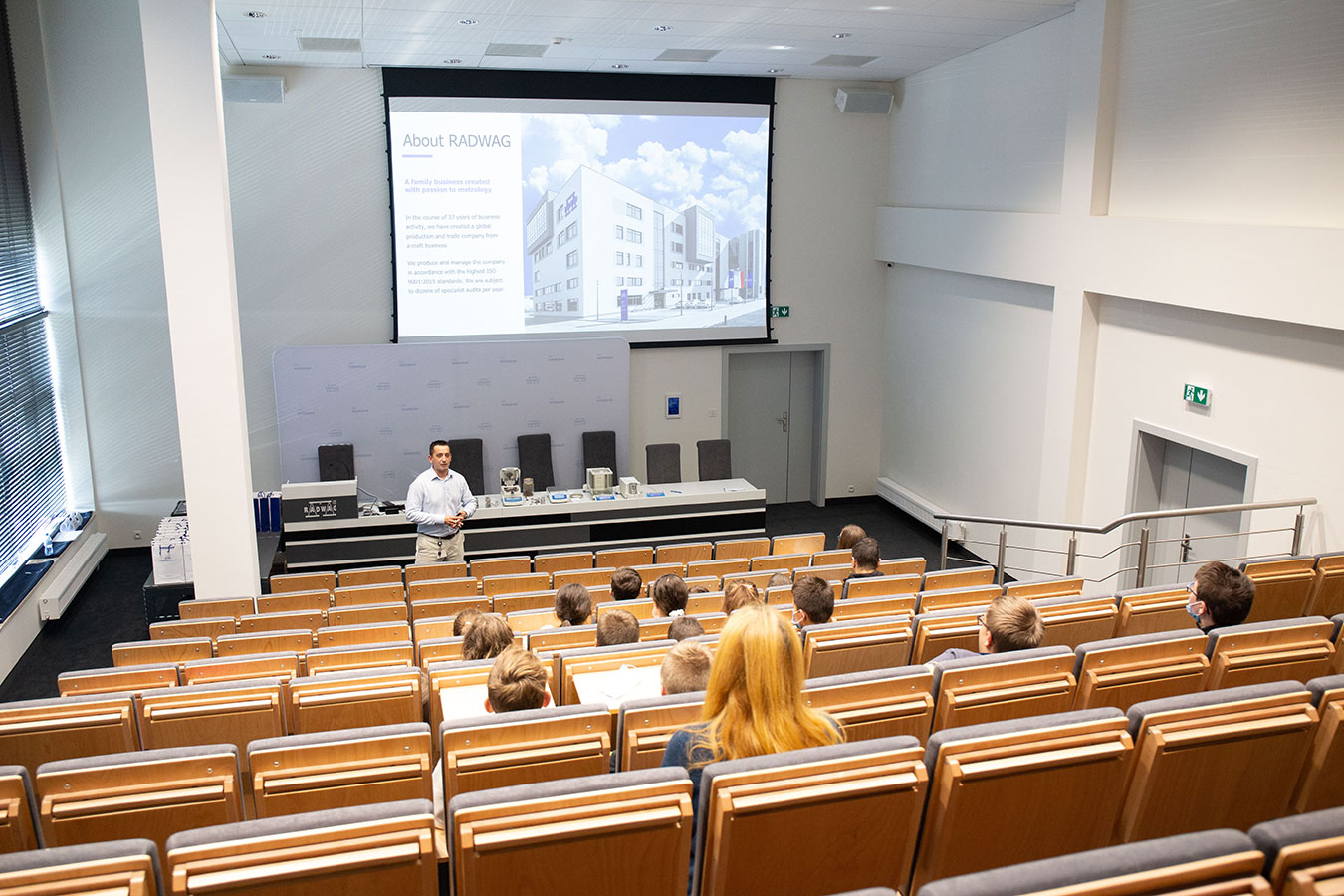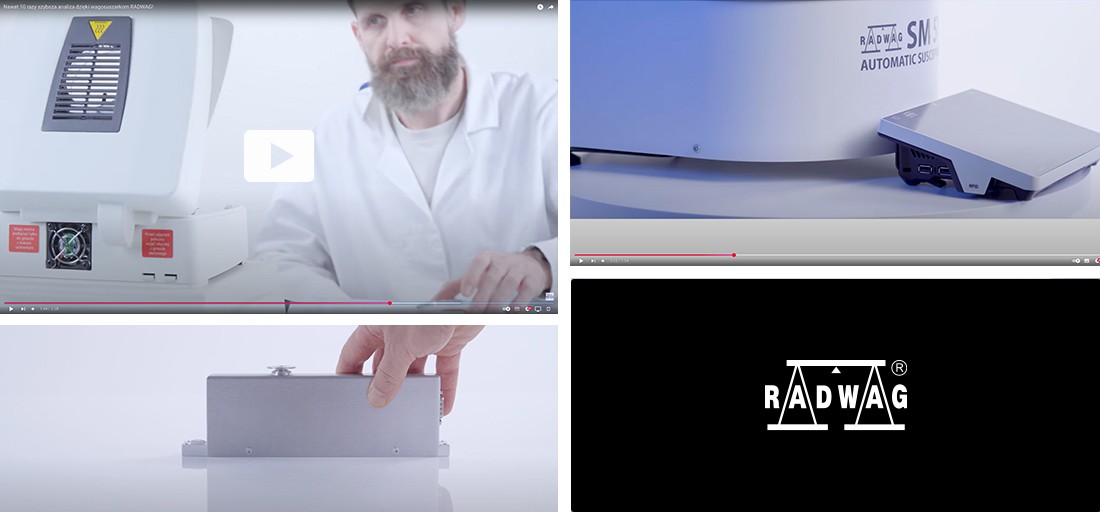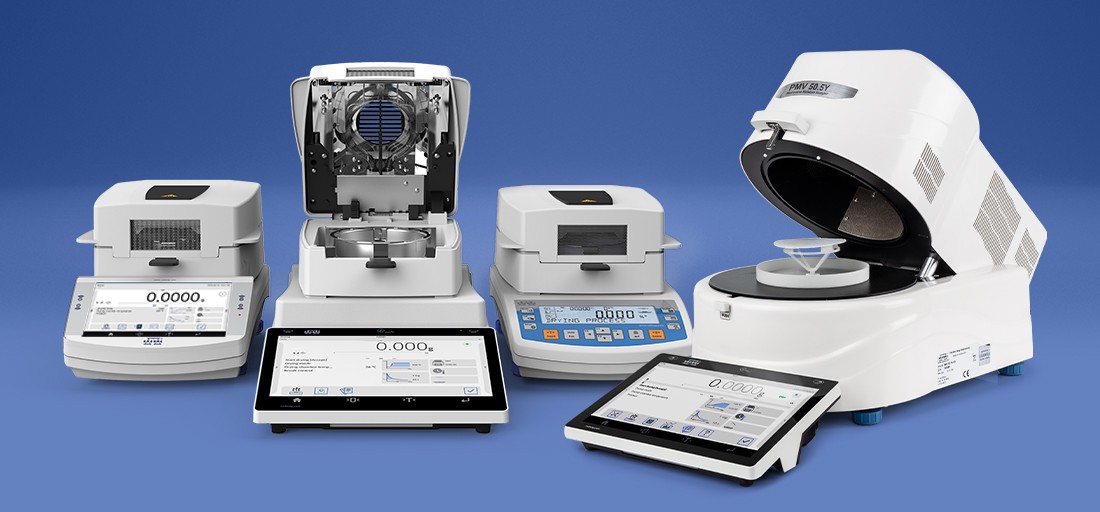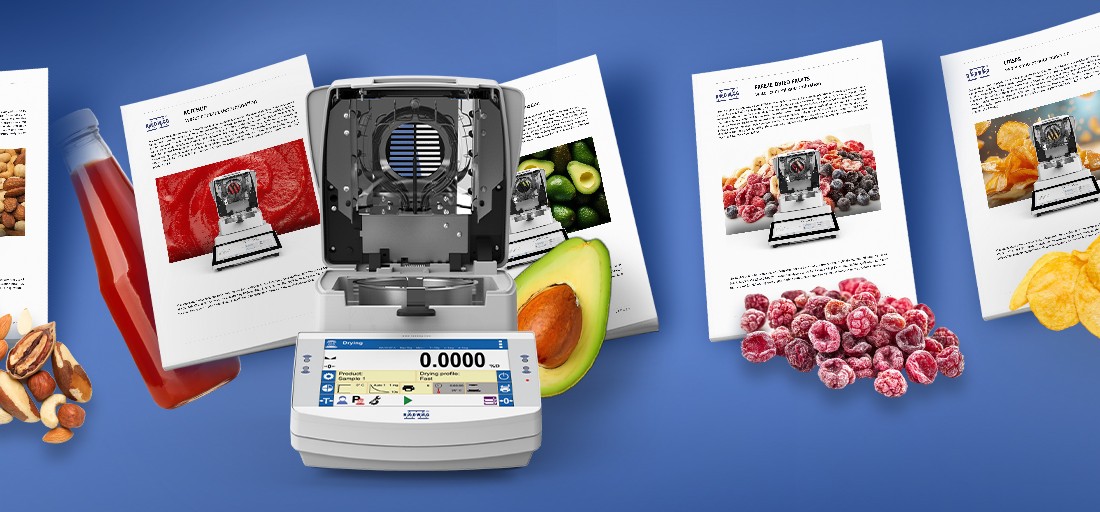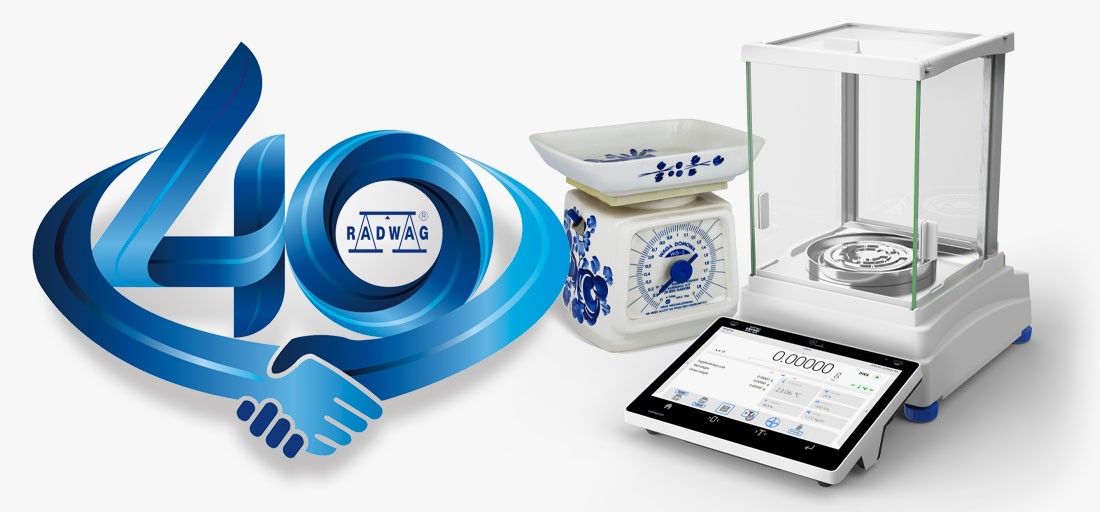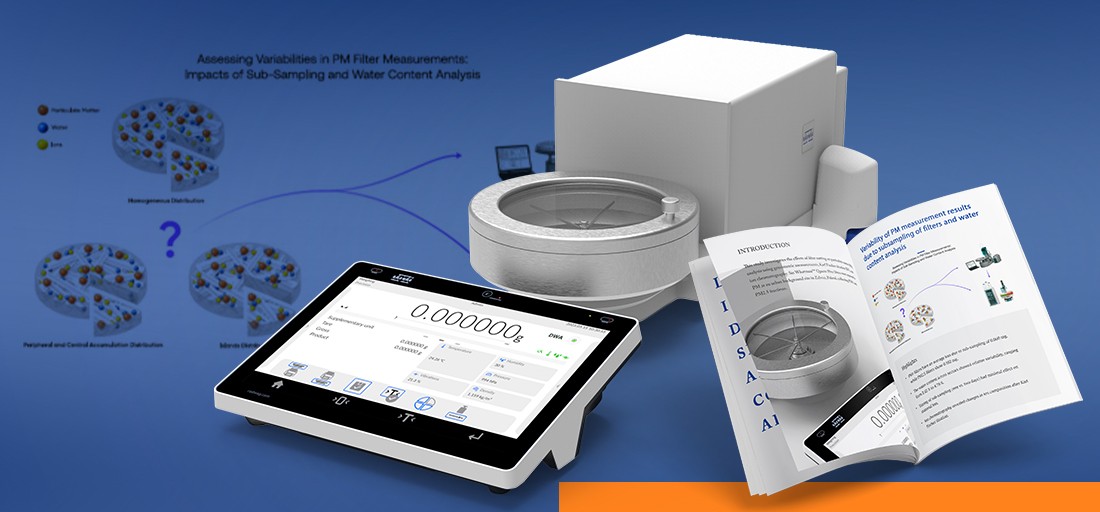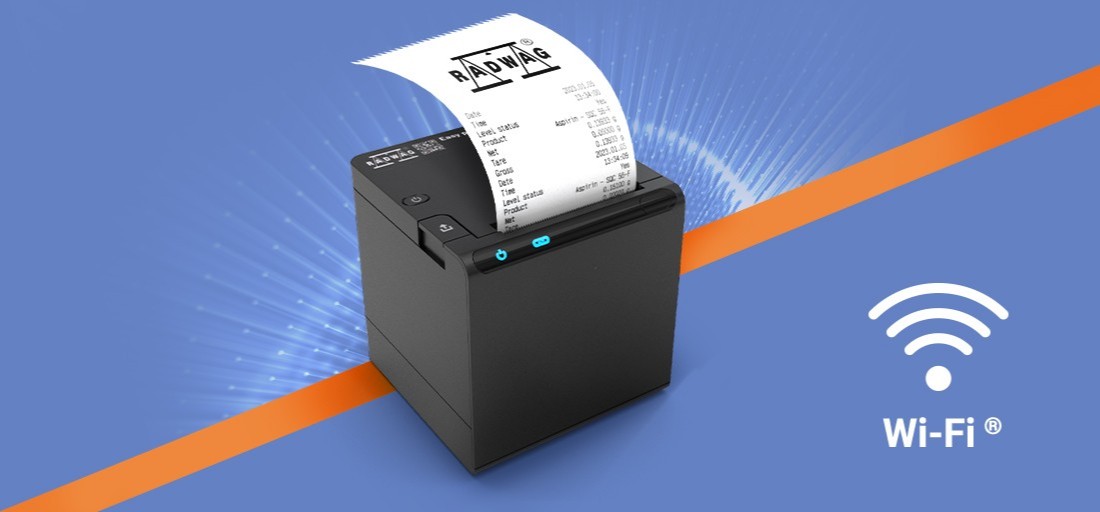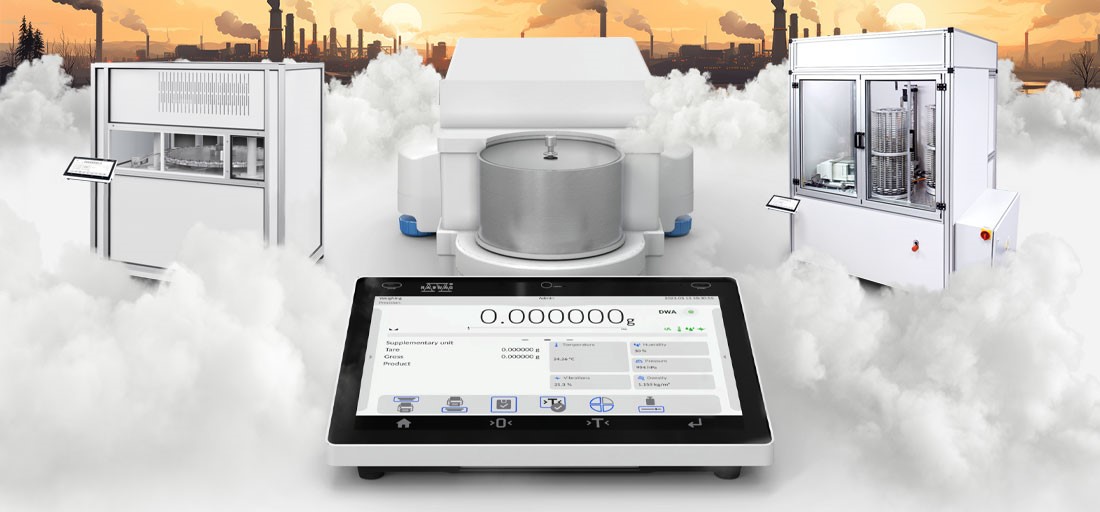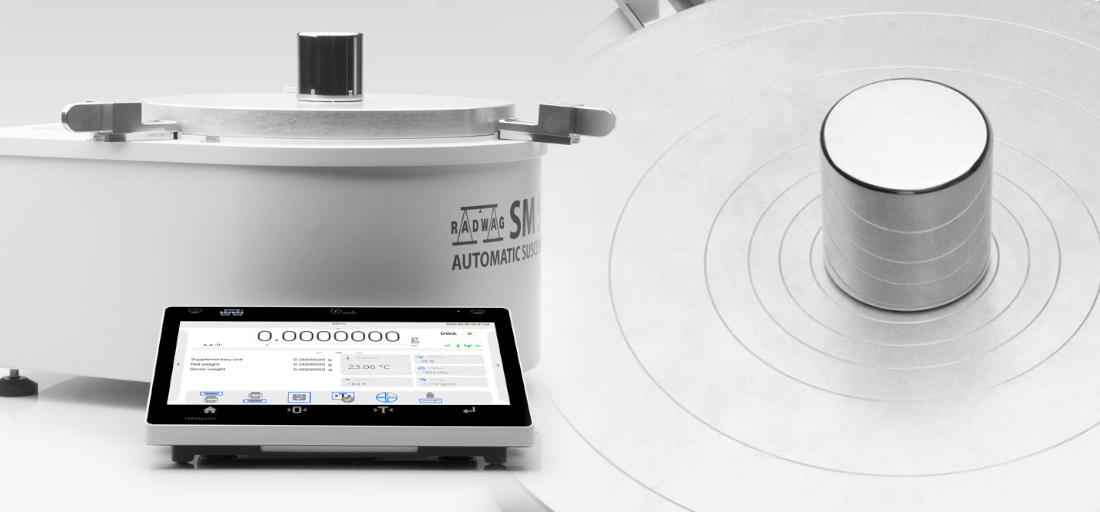“Physics Lesson with RADWAG”
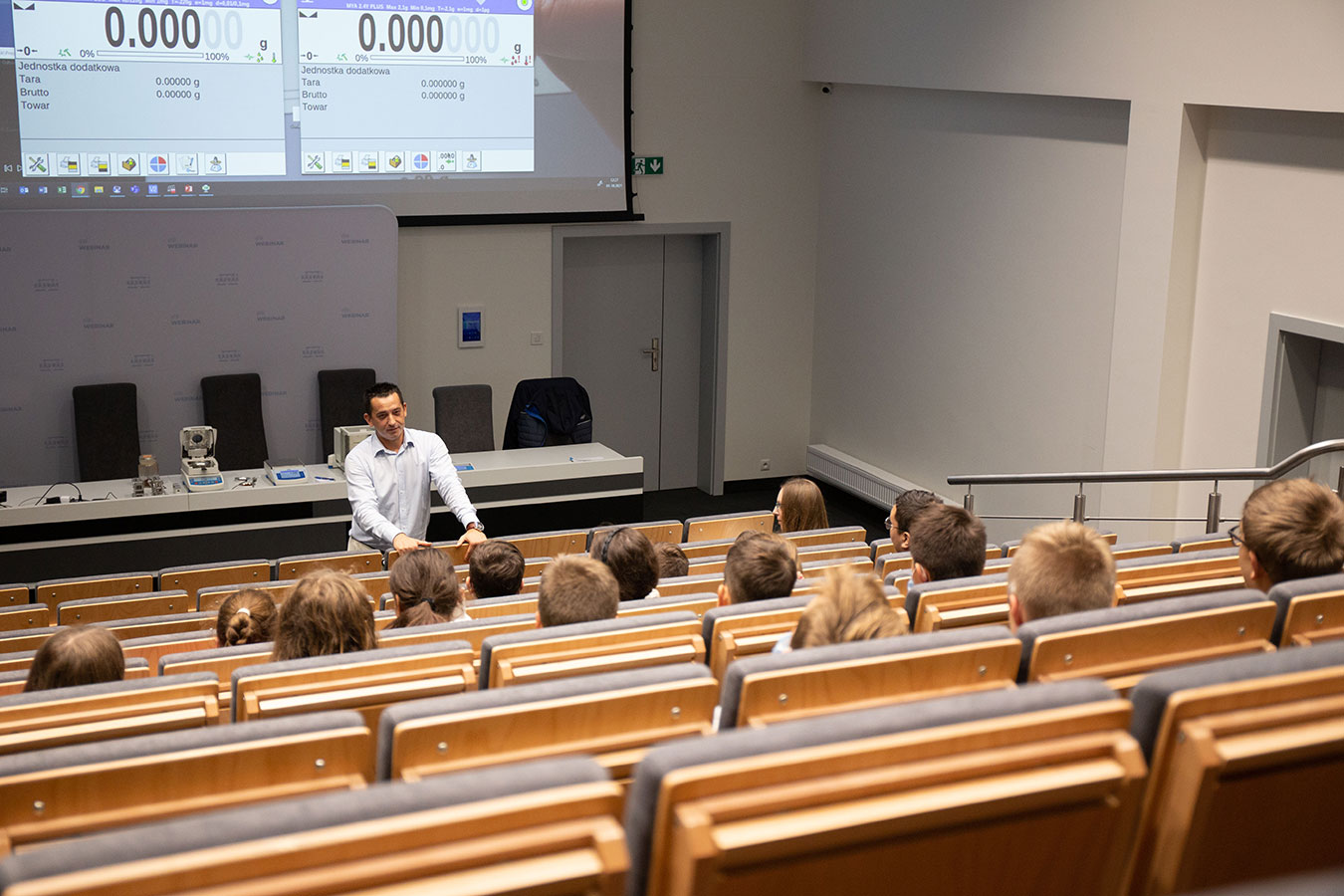
Physics is a universal science because it studies the causes and effects of phenomena we confront every day, and at the same time, it makes possible something as extraordinary as a space flight. And what is the relation between an electronic balance and physics? One of the physical quantities is force, which measures physical interactions between objects. It has four characteristics: magnitude, direction, sense, and point of application. To weigh something, we have to use force.
This is what our guests found out during the “Physics Lesson” which took place on October 1, 2021 in RADWAG headquarters in Radom. We were visited by 7th grade students of the Integrated Public Elementary School No. 14 in Radom and two of their teachers.
Seventh grade is the time when students in Poland have their first contact with physics as a science. Despite the fact that our guests had only started in the subject a month prior to their visit in RADWAG, they were able to answer most of the questions the presenter asked them, and they had plenty of questions themselves.
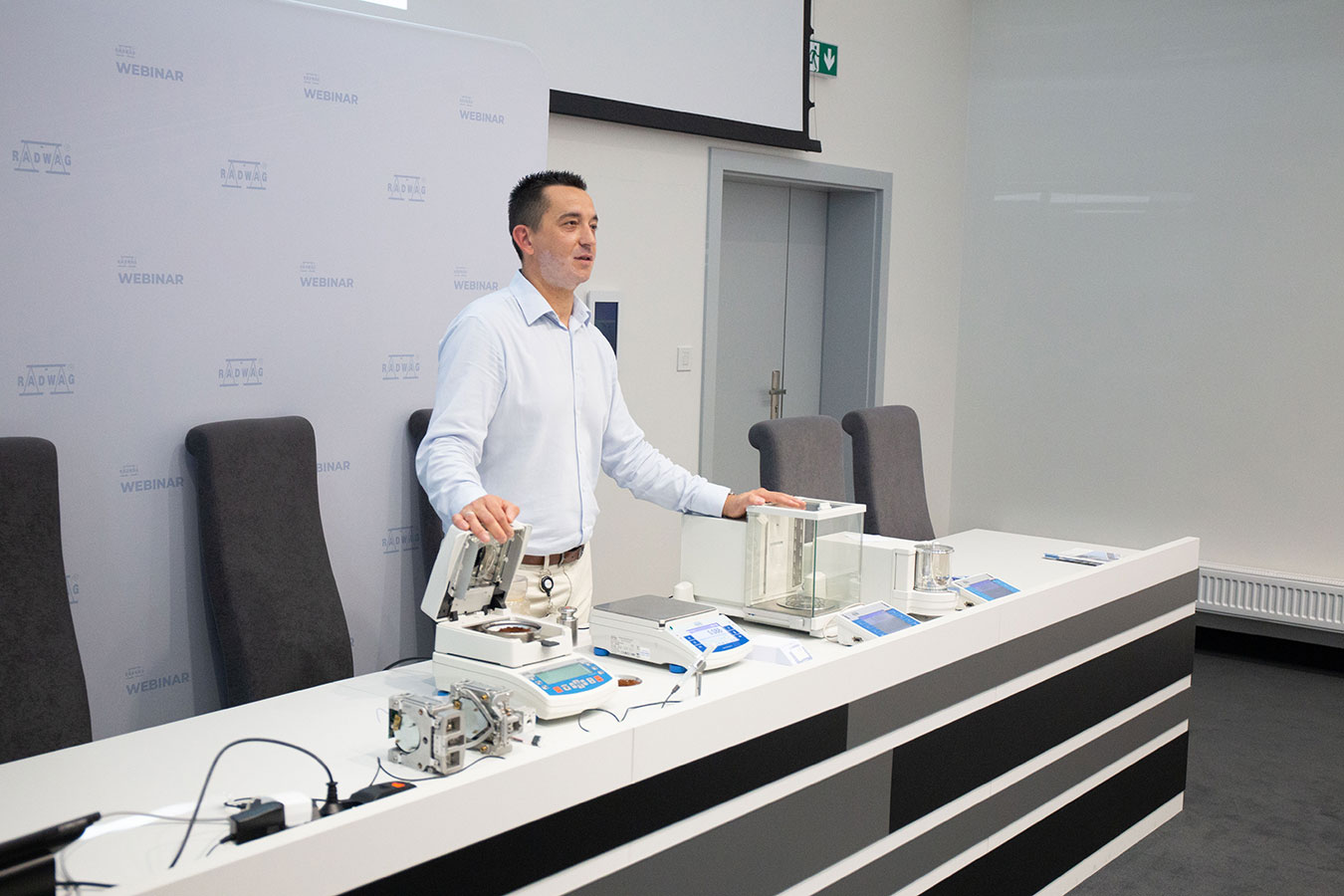
Our physics lesson began in the auditorium, where students saw some selected devices manufactured by RADWAG, namely: a moisture analyzer, precision and analytical balances, a microbalance weighing with the accuracy of 1 microgram, and THBR 2.0 ambient conditions module. THBR continuously monitored temperature, humidity, pressure, and vibration, and displayed air density, so the youth could see how the abovementioned physical quantities were changing.
The presenter then demonstrated a mass standard, commonly called a weight, and talked about a revolution in the world of metrology. This revolution concerned the redefinition of the kilogram, which took place on May 20, 2019. RADWAG hosted two scientific conferences devoted to this issue and measurement traceability in mass metrology.
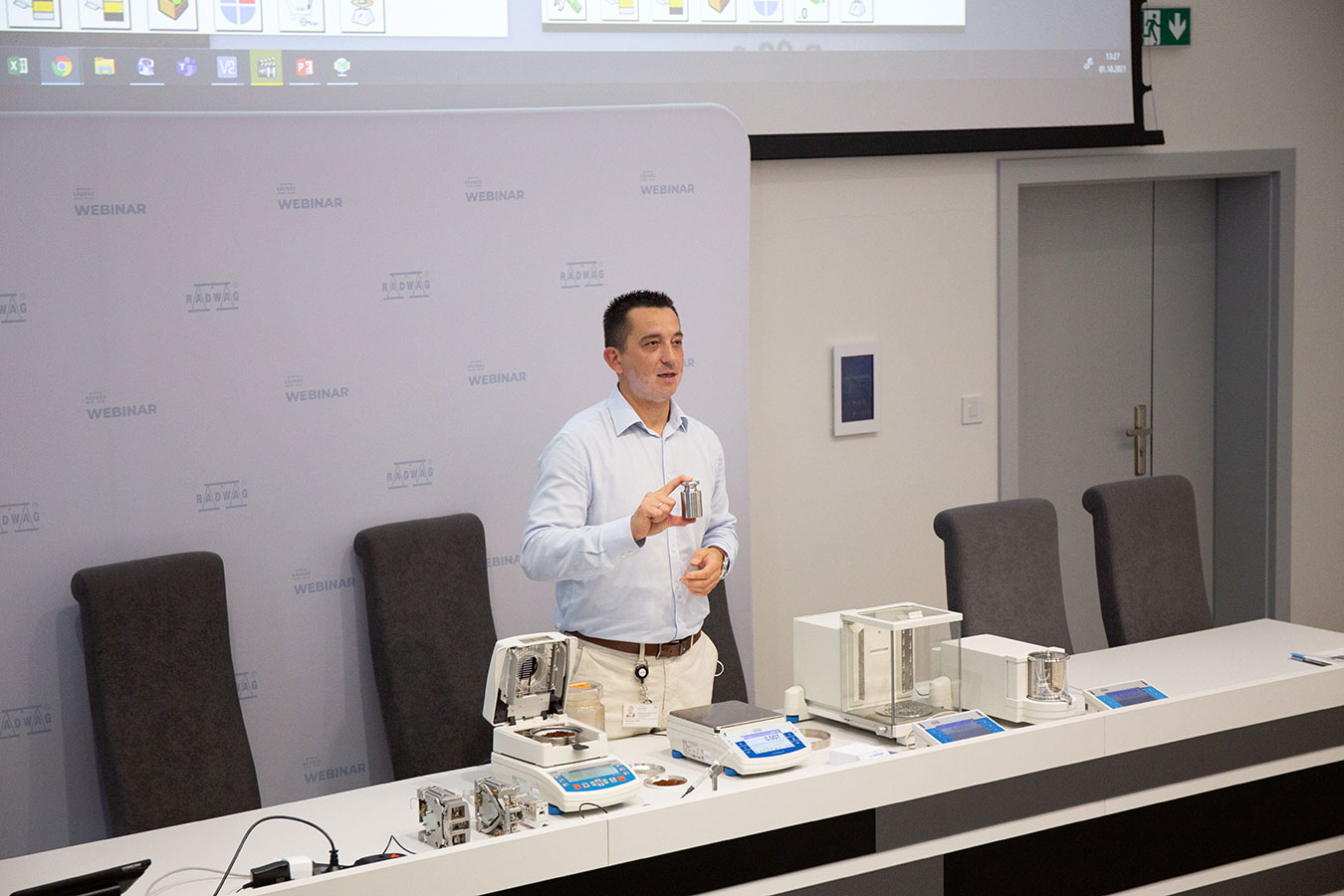
After the lecture, the lecturer, assisted by his teenage listeners, conducted experiments. One of them was drying coffee using the moisture analyzer by RADWAG. Before we got the result, students tried to guess it, and one of them succeeded in rounding (4.38% ≈ 4%). In the process, we learned that in order for the measurement to be accurate, we need to provide the balance with good weighing conditions: stable temperature and humidity, and vibration-free base.
Another experience involved weighing the physics teacher who accompanied the students. To do this, we placed a blank piece of paper on the weighing pan of the analytical balance. After obtaining and noting the measurement result, we removed it from the pan and placed the same piece of paper on the weighing pan again, but this time it was signed by the physics teacher. It turned out that the teacher's autograph weighs over 1 milligram. Moreover, thanks to the databases, the weight of his signature was automatically saved to the balance's weighing database.
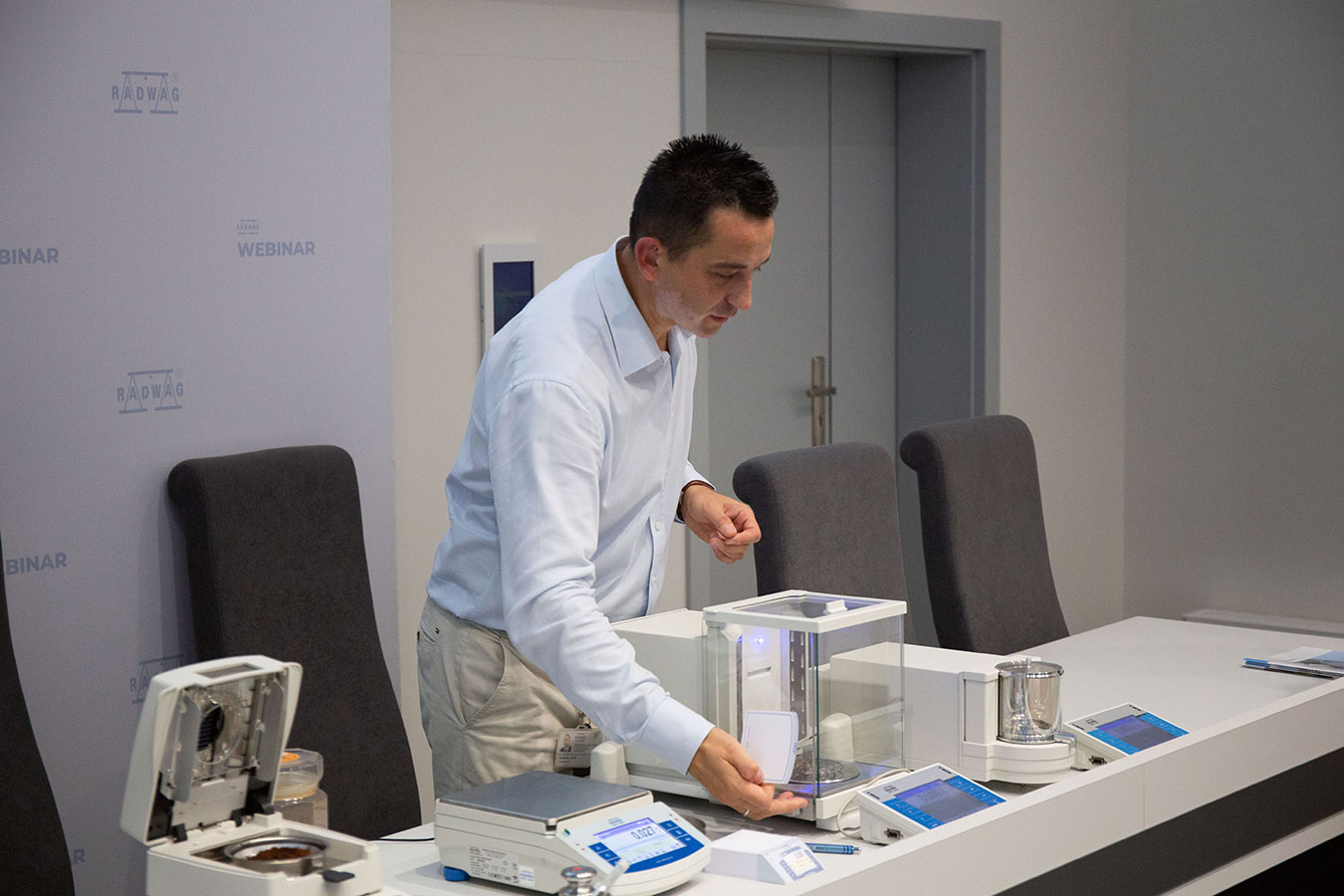
The conclusion we came to together was this: without physics, all of this wouldn't work – we couldn't make such accurate measurements. With a balance that weighs with the accuracy of 0.1 microgram, or 7th decimal place, we can measure ingredients of life-saving drugs or discover new materials from the world of nanotechnology. What is more, the comparison of mass standards, carried out using devices called mass comparators, is performed with an accuracy of 8 decimal places. In this field, we are second to none.
The next stage of the lesson was a visit to the part of RADWAG where previously seen balances are manufactured. After returning to the auditorium, the students took part in a competition to check their knowledge gained during the “Physics Lesson with RADWAG”. The students with the fastest correct answers were rewarded.
